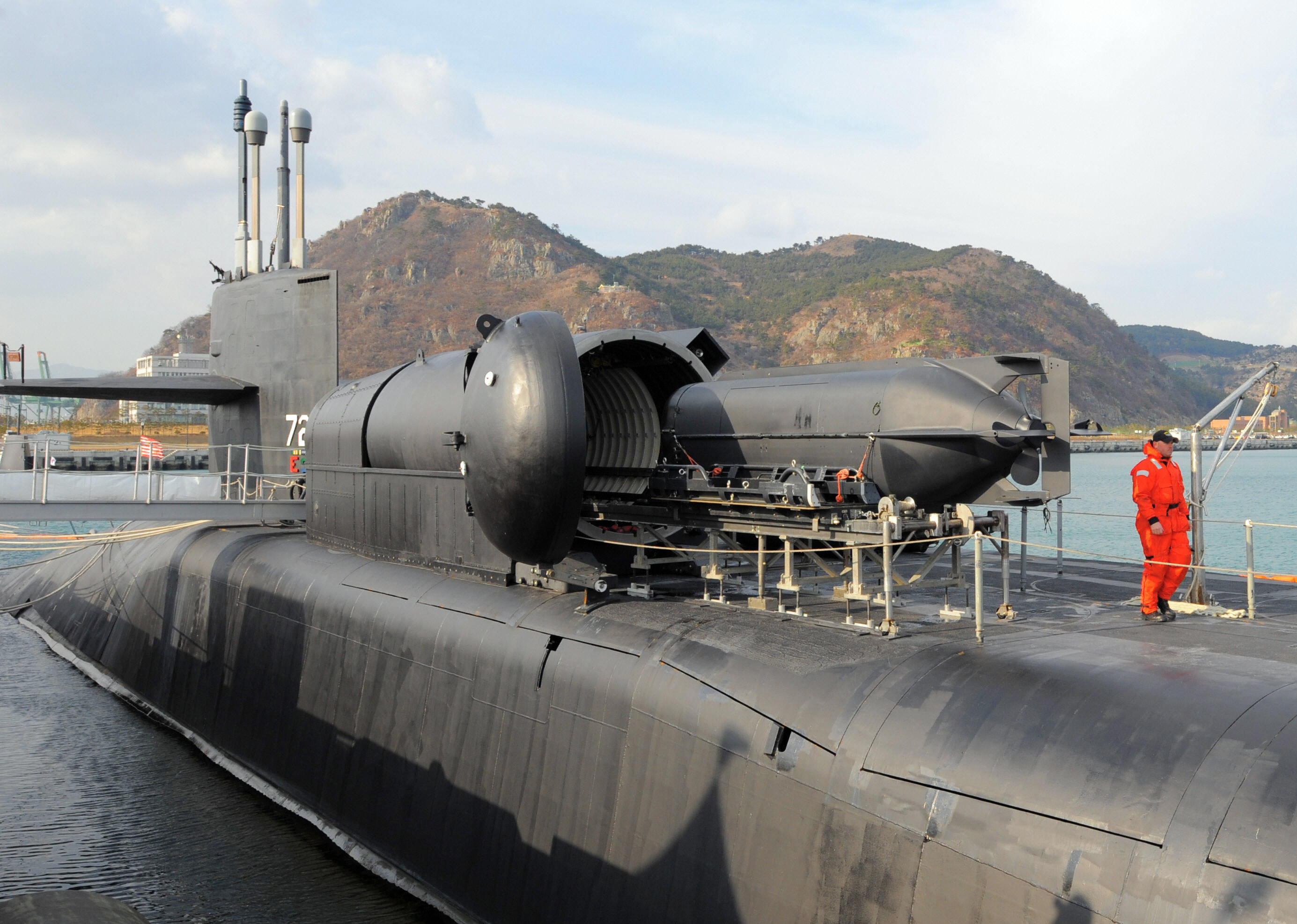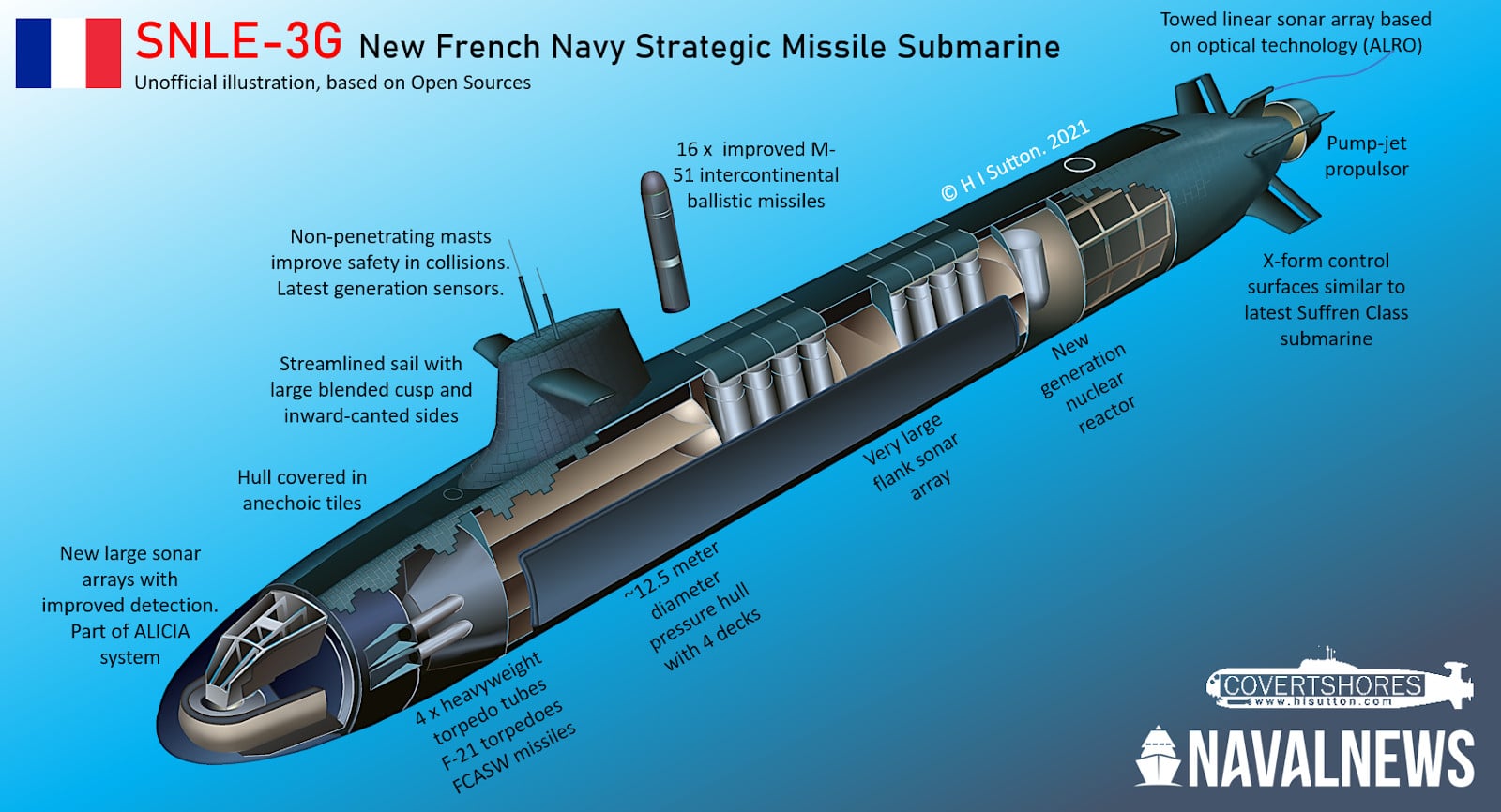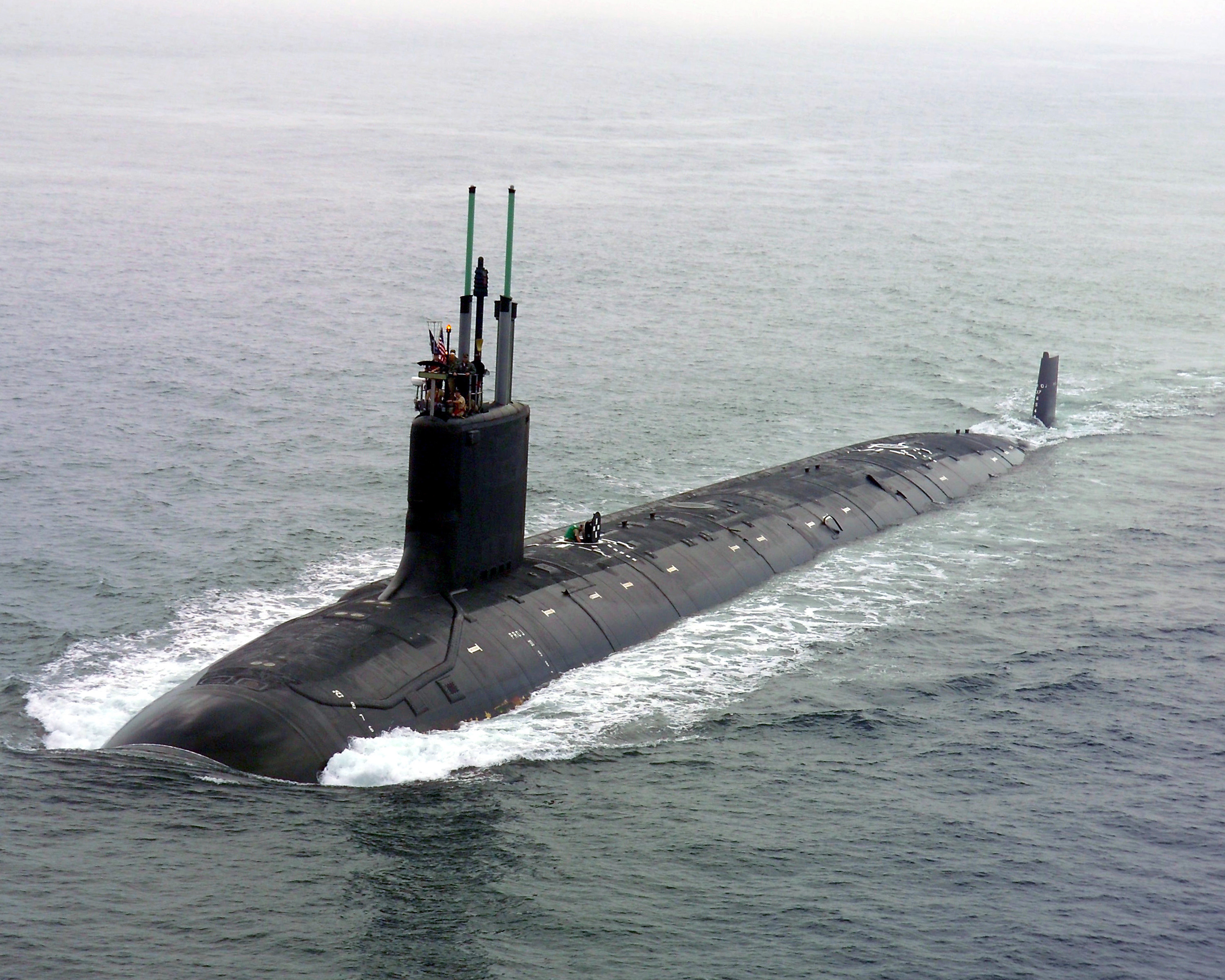Ohio Class Sub - Naval equipment for ships and submarines
The Guided Missile Submarine Class (SSGN) provides the Navy with unprecedented strike and special operations capabilities from stealthy and stealthy locations. Armed with tactical missiles and equipped with advanced communications capabilities, SSGNs can directly support combatant commander strike and Special Operations Forces (SOF) requirements.
Ohio Class Sub

A 1994 Nuclear Review determined that 14 of her 18 SSBNs were necessary to meet the needs of the US strategic force. Therefore, the Navy decided to convert four of her Ohio-class ships into conventional land-attack and SOF platforms. This has allowed the Navy to leverage existing submarine technology while expanding its ability to meet the current and future needs of U.S. combat commanders.
U.s. Navy's Ohio Class Submarine To Get New Hypersonic Weapons
The SSGN Program Office refueled and converted four ballistic missile submarines (SSBNs) into SSGNs in her little over five years at a lower cost and in less time than building a new platform. USS Ohio (SSGN 726) she entered the shipyard on November 15, 2002, completed her conversion in December 2005, and delivered for the first time in October 2007. USS Florida (SSGN 728) began her refueling and conversion in August 2003. April 2006. USS Michigan (SSGN 727) she began the shipyard acquisition in October 2004 and was delivered in November 2006. USS Georgia (SSGN 729) she completed her conversion in December 2007.
The Navy has formed a special partnership to bring the SSGN concept to life. All four submarines required engineering overhaul (ERO) in addition to extensive replacement work. Puget Her Sound Naval Shipyard in Washington conducted her ERO in both Ohio and Michigan, and Norfolk Naval Shipyard in Virginia conducted refueling in Florida and Georgia. The Navy has awarded a General Dynamics electric submarine a contract to convert an SSBN into her SSGN, making it the first such collaboration with a company doing that work within the Navy. The first-of-its-kind partnership was a huge success as the program was completed on time and within budget.
Together, her four SSGNs represent more than half of the direct-deployed capability of the U.S. submarine force, with each SSGN carrying up to 154 Tomahawk ground-attack missiles. Missiles are loaded into her seven multi-all-up-round her canisters (MAC) within her tubes of up to 22 missiles. These missile tubes may also house additional storage tanks for SOF equipment, food, and other materiel used to enhance the ability of advancing submarines to support combat commander missions. can. Rocket tubes can also accommodate future payloads such as new types of missiles, unmanned aerial vehicles and unmanned submarines.
The SSGN can accommodate up to 66 of her SOF personnel at one time. Additional bays were installed in the missile compartment to accommodate additional crew members, and other measures were taken to increase the time SOF units could deploy her SSGN. The two main missile tubes have been permanently replaced with lockers that allow covert insertion and removal by SOF personnel. Each cabin can also house a Deck Shelter (DDS) that enhances the SSGN's SOF capabilities.
New U.s. Navy Nuclear Sub Class To Be Named For D.c
During the conversion, each SSGN received a common undersea radio room and two high-data antennas to greatly enhance its communications capabilities. These additions allow each SSGN to function as a forward-deployed joint command center for light fighters.
SSGN is a key component of the Navy's future war effort. Each SSGN brings mission flexibility and enhanced capabilities to combatants with its massive payload capacity, two-man crew deployment concept, and inherent stealth.
Ships in this class: USS Ohio (SSGN 726), Bangor, WA USS Michigan (SSGN 727), Bangor, WA USS Florida (SSGN 728), Kings Bay, GA USS Georgia (SSGN 729), Kings Bay, GA

The Ukrainian military is using self-propelled artillery to drive Russian forces out of the country's second largest city...
Navy Could Extend Life Of Five Ohio Class Ballistic Missile Boats To Hedge Against Columbia Program Delays
A real-life Top Gun pilot takes to the skies in his F-35 fighter jet. These are the most charged...
A Ukrainian soldier is using his US M777 missiles on the battlefield and wanted to resist the Russian forces...
A Marine Corps plane crashed in the Southern California desert on Wednesday as civilians and emergency crews responded to...
A satellite image of Ukraine's Snake Island released Friday appeared to show a group of sunken Russian ships...
Us Navy Submarine Uss Ohio May Be Important Tool For Biden To Send Message To China
Future Destroyer Honoring Vietnam War Heroes Secretary of the Navy Carlos del Toro has announced that it will be named after one of the new services yet to be built...
The Navy may choose between service checks and aid to Ukraine due to ammunition delays, officials say ammunition production delays will hamper U.S. aid to Ukraine.
Ukrainian forces train Patriot system in Oklahoma Kyiv has made the decision to withdraw troops from the battlefield and cross the Atlantic to train in the United States.
Marines say new uniform orders are underway amid shortages The Marines still face shortages of uniforms, including standard combat shirts, but...
Submarines To Become Stealthier Through Acoustic Superiority Upgrades, Operational Concepts
Canada has signed a purchase agreement for 88 U.S.-made F-35 fighter jets, the first four of which will be used to operate its anticipated fleet of submarine-to-submarine missiles (SSBNs) and its four submarine-launched missiles. It is expected to be delivered in 2026 with full capacity. (SSGN). With a displacement of 18,750 tons, the Ohio-class submarine is the largest submarine ever built for the US Navy. It is her third largest submarine in the world after her 48,000-ton Typhoon designed by the Russian Navy.
Each she has 24 her Tridt II, Ohio-class ships carry more missiles than the Borei-class (16, her 20 in the Borei II) or the Typhoon-class (20).
The Ohio-class SSBN is part of the United States Nuclear Triad, along with the United States Air Force's strategic bombers and intercontinental ballistic missiles.
Together, her 14 SSBNs carry half of the US strategic warheads. Tridt missiles do not have pre-planned targets patrolled by submarines,
Uss Ohio (ssgn 726)
The flagship of this class is her USS Ohio. All Ohio-class submarines, with the exception of USS Henry M. Jackson, are named after the US states assigned to battleships and cruisers in US Naval tradition. The Ohio-class should be gradually replaced by the Columbia-class starting in 2031.
Ohio-class submarines are designed for strategic deterrence patrols. Each submarine is assigned her two full crews, known as the Blue Crew and the Gold Crew, each typically responsible for 70 to 90 days of patrol. Her three large supplies were set up for recovery and maintenance of large calibers to reduce the time spent in port for crew transfers and replenishment. These hatches allow the rapid transfer of supplies, equipment replacement modules, and engine parts, speeding up response and maintenance of the submarine. In addition, the submarine's "stealth" capabilities are vastly improved over all previous ballistic missile systems. Ohio was not found during her 1982 sea trials, giving the U.S. Navy a greater degree of flexibility.
The class design allows the boat to operate for up to 15 years between major overhauls. Although these cruisers are reported to be quieter at her 20 knots (37 km/h; 23 mph) cruising speed than her 6 knots (11 km/h; 6.9 mph) on the old Lafayette. , the exact information remains. classified.

The Ohio-class submarines were built in hull sections, each four-story section measuring 42 feet (13 m) in diameter.
New Submarines Compared: Columbia Class, Dreadnought Class And Snle 3g
Components will be manufactured at the General Dynamics Electric Boat facility in Quonset Point, Rhode Island and assembled at the shipyard in Groton, Connecticut.
The U.S. Navy operates a total of 18 Ohio submarines, including 14 ballistic missile submarines (SSBNs) and her four cruise missile submarines (SSGNs). SSBN submarines provide the sea-based leg of the nuclear triad. Each SSBN is armed with up to 24 Tridt II ballistic missiles (SLBMs). Each SSGN can carry 154 Tomahawk cruise missiles, as well as Harpoon missiles that fire torpedo tubes.
The Ohio-class was designed to carry her Tridt ballistic missile, co-designed in the 1970s. Her first eight of the Ohio variants were armed with 24 Tridt I C4 SLBMs.
Starting with her ninth submarine in Trite, Tennessee, the remaining ships are equipped with her large three-stage Trite II D5 missiles.
H I Sutton
The Tridt I missile carries her 8 retry vehicles and the Tridt II carries her 12, totaling more accuracy and destructive power than her Tridt I missile. Starting in Alaska in 2000, the Navy began converting her C4 missile-armed ballistic missile submarines to carry her D5 missiles. This work was completed in mid-2008. Her first eight were homeported in Bangor, Washington and replaced the Polaris A3 missile-launching submarine. Her ten remaining submarines replaced Poseidon and Torid in the Atlantic Fleet, her Backfit submarines and had a homeport at her bay in King, Georgia.
In 1994, the Nuclear Review Study determined that 14 of the 18 Ohio SSBNs operated by the US Navy were sufficient for US strategic needs. This is to conduct conditional ground attacks and special operations. as a result,
Gato class sub, trafalgar class sub, sub class 309, sub class 189, sub class 190, la class sub, sub class, kicker mono class d sub amplifier, sub class 820, balao class sub, class d sub amp, sub class 186
0 Comments